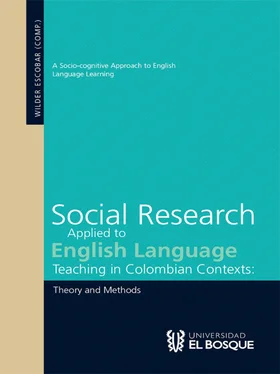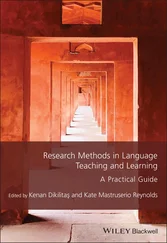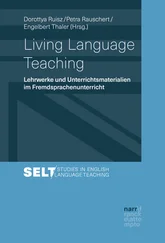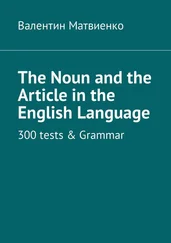(2a) El alpinista (f) descendió la montaña.
(2b) El bebé (f) se incorporó solo.
These examples clearly establish that the motion verbs (descender; incorporarse) inherently contain an element of path that their English counterparts do not (to go down, to sit up). Here, it becomes clear that the English verbs most frequently appear in a verb phrase to fully confer the semantic meaning of the motion event. Verb-framed languages, conversely, tend to conflate both motion and path within the verb itself.
The dichotomy of verb construction between verb- and satellite-framed languages becomes even more profound when considering sentences with multiple motion events. As established above, path of motion is most often encoded outside of the verb in a satellite in s-framed languages, therefore permitting multiple motion events to be associated with the same verb as demonstrated in (3a) and (3b):
(3a) He (f) fell down(p) the hill and into(p) the river.
(3b) She (f) ran down(p) the stairs and out(p) the door.
From the examples (3a) and (3b), we see that the verbs to fall and to run can take multiple satellites thus collocating separate motion events onto the same verb. To emphasize this notion, (3a) and (3b) could be written in the manner of (3c) and (3d):
(3c) [He (f) fell down the hill] and [he (f) fell into the river]
(3d) [She (f) ran down the stairs] and [she (f) ran out the door]
For the sake of brevity, native-like English discourse would never contain expressions of this style. Instead, the verbs to fall and to run are simply assigned multiple satellites that each represent the distinct events clarified in (3c) and (3d). As a result of this paradigm, infinite multiple satellite constructions are possible in English and are quite frequent in colloquial speech. Additional examples of grammatical English sentences that follow this model include:
(i) He went in the main entrance and straight to the mayor’s office.
(ii) The children got out of the sun and into the shade.
(iii) The bird flew out of the nest and over to the feeder.
(iv) We walked up the hill and down the other side.
(v) I went in the door, down the hallway, around the corner, and out the back.
The verb phrases present in these sentences denote more than one event of motion by the addition of multiple path satellites. From this model, it is not a stretch of the imagination to deduce the grammaticality of (v) which expresses four motion events on the verb to go solely via the addition of path satellites.
This multiple-event expression, however pervasive in the verb phrases of satellite-framed English, is grammatically impossible in languages with verb-framed motion event expression. As Brown and Gullberg (2010) explain, in verb-framed languages “comparable information is spread across [separate] clauses, each associated with different path verbs” (p. 266). As path is often conflated on the verb in verb-framed languages, the Spanish translation of (3a) and (3b) respectively must be written as follows in order to retain grammaticality:
(4a) Él se cayó de la montaña y se sumergió en el río.
(4b) Ella bajó la escalera corriendo y salió por la puerta.
As demonstrated by (4a) and (4b), the path of motion is distinctly encoded in each of the verbs and, therefore, motions following dissimilar paths must be expressed via separate clauses. The verbs caerse and sumergirse both inherently carry within the verb nucleus a path of motion, that of the figure falling downward toward the ground referent, or the figure entering the ground referent respectively. As such, verb-framed languages accomplish the task of communicating the previous event of a man falling down the mountain and into the river differently than would a satellite-framed language. Whereas Spanish requires the use of separate motion/path verbs, English permits the use of the aggregation of satellites to a verb phrase to express multiple paths of motion.
With the idea of path established as a determining factor in typological classification, it becomes necessary to examine the manner in which each of the motion events is depicted and the implications of such in verb- and satellite-framed languages. Talmy (2000) refers to the manner of motion as a co-event, or an associated motion that often expresses the manner in which the event occurred. This type of lexicalization, prevalent in satellite-framed languages, permits the verb to express not only motion, but the manner of the co-event as well. As Talmy (2000) indicates, “the relation that the co-event bears to the main motion event is then indicated by a form like WITH-THE-MANNER-OF or WITH-THE-CAUSE-OF” (p. 29). This idea is best expressed by first referring to the simple expression of motion in (5a):
(5a) The man moved across the room.
In this example, we can infer that a man began on one side of the room and arrived to the opposing side, yet noting is mentioned about the manner in which he completed the action. The verb to move used in (5a) is simply demonstrating movement, yet it does not convey the manner in which the movement occurred. However, in the following examples, English manner-of-motion verbs are used to elaborate not just the movement, but the manner in which the man moved across the room:
(5b) The man danced across the room.
(5c) The man ran across the room.
(5d) The man snuck across the room.
(5e) The man shuffled across the room.
As Talmy (2000) suggests, the idea that the man danced across the room can thus be interpreted as the following:
(5f) [The man MOVED across the room] WITH-THE-MANNER-OF [The man danced].
From this example, the conflation of both manner and motion on the verb root in satellite-framed languages becomes evident. This phenomenon allows the speaker of a satellite-framed language such as English to interpret an event in such a way that the motion event and the co-event essentially become inseparable.
The conflation of manner and motion evidenced in the previous examples (5b-e), however typical in satellite-framed languages, is a syntactic construct that is considerably less ubiquitous in their verb-framed counterparts. Attempts to directly translate the previous sentences would result in phrases perceived as markedly cacophonous in native speech. As such, the following examples are provided to convey the difference in manner encoding in verb-framed languages, such as Spanish. Note that the sentences marked with an asterisk (*), although perhaps direct translations, express dissimilar interpretations of movement.
(6a) El hombre atravesó la sala corriendo.
(6b) El hombre atravesó la sala sigilosamente.
(6c) El hombre atravesó la sala arrastrando los pies.
(6d) El hombre corrió por la sala.*
(6e) El hombre se arrastró por la sala.*
It is noted that the Spanish translations rely on an adverb or adverbial phrase to express the notion of WITH-THE-MANNER-OF. Furthermore, the sentences presented in (6d) and (6e), although grammatically correct, express a slightly different path of motion than their English counterparts. The motion expressed in (6d) is that of a man moving around within a room with the manner of running, not necessarily a completed movement from one side to the other as in (5c). Likewise, the movement communicated in (6e) conveys a dissimilar action to a native speaker of Spanish than that of the English equivalent seen in (5e).
To express the same movement of a man crossing a room, the manner of motion in examples (6a) through (6c) cannot be contained within the verb itself and is placed outside of the nucleus in an adverb or adverbial phrase. The consequence of the typological paradigm, as Ibarretxe-Antuaño (2012) suggests, is such that speakers of verb- and satellite-framed languages are motivated to communicate motion events in certain predetermined ways. This concept becomes apparent when considering the conceptualizations of movement expressed in (6d) and (6e) as opposed to their English counterparts.
Читать дальше












